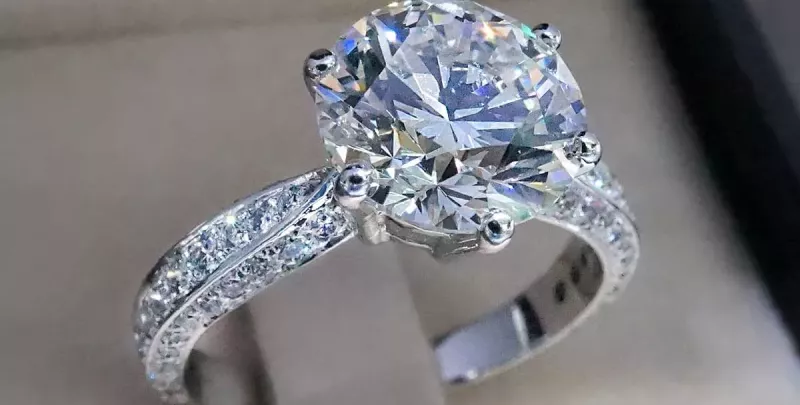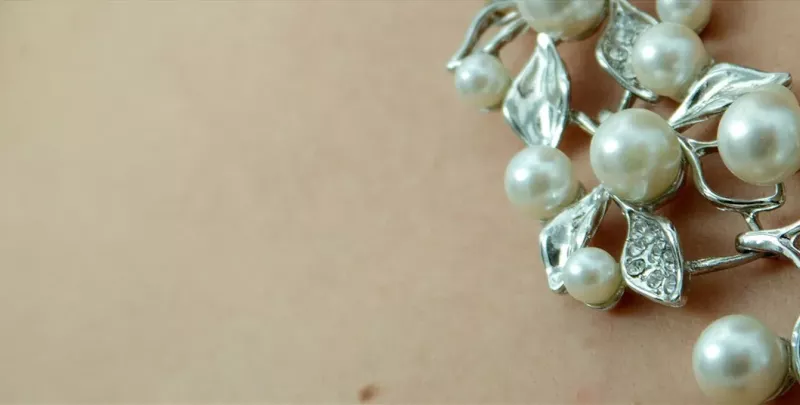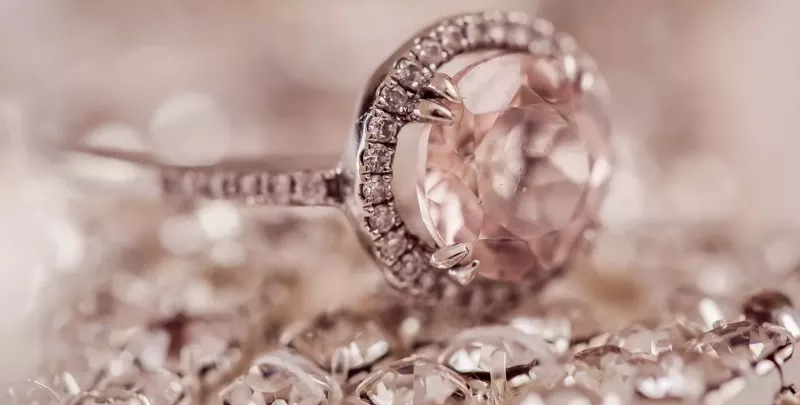Gemstones have this unique ability to captivate us with their beauty, and deciding the type of stone you would like to be set into an engagement ring is very much a matter of personal choice. Whilst diamonds are the most popular of stones used in jewellery, there is a wider choice available, some stones may hold particular appeal for cultural and historical reasons, and not just for their aesthetic qualities.
We hope our short guide will give you some information on the different types of stone that are available. Perhaps you will want to stand out from the crowd and look beyond a diamond as your choice for a main stone in your engagement ring.
Diamonds: The classic perennial favourite
Diamonds are the hardest known natural substance and have been an integral part of jewellery since they were first discovered in the 4th century BC. Diamonds are especially revered for their ability to refract light, resulting in the famous brilliance and “fire”.
Colourless diamonds are the most popular and the “4cs” cut, colour, clarity, and carat weight determine a diamond's quality. A jeweller will be able to help you understand these different attributes and give you good advice in choosing an engagement ring.
Sometimes smaller stones with better attributes can sparkle better than larger stones. In recent years, diamonds in other colours such as pink, blue, and yellow have become more popular.
Diamonds come in various shapes; the round cut brilliant is the most popular but other shapes are available to suit your personal choice. The versatility of diamonds makes them suitable for various jewellery styles, from classic solitaire rings to contemporary designs.
Emeralds: The lush green stone
Emeralds, with their lush green hues, have been prized throughout history. Emeralds are found throughout the world with Colombia, Brazil, and Zambia the main countries where they’re mined. Their beautiful green colour can be attributed to trace materials found inside them including chromium or sometimes vanadium. Because of the impurities found inside them, emeralds do not exhibit the same hardness as diamonds.
Emeralds are popular in rings, earrings, and necklaces, and their association with luxury and opulence makes them a favourite among royalty.
Emeralds are a variety of the mineral Beryl, which is responsible for many types of gemstones. Some examples are.
- Emeralds (Green)
- Aquamarine (Greenish blue to blue)
- Morganite (pink to orange)
- Red Beryl (red),
- Green Beryl (Light green)
- Heliodor (Yellow)
- Goshenite (Colourless)
- Maxixe (Deep blue)
Emeralds, like Diamonds are graded using four basic parameters known as "the four Cs".
Sapphires: The beautiful blue stone
Ask someone the colour of Sapphires and they will normally say blue, and its true, these beautiful stones are traditionally associated with a rich blue colour, but they exist in a wide range of hues, except red.
Sapphires are considered a symbol of love & loyalty and hold special importance for Royalty. In recent years the use of sapphires has become more popular in engagement rings, and they make a great choice for a truly regal look.
Sapphires are valued for their durability and are second only to diamonds in terms of hardness.
Rubies: The gem of passion
Rubies, the famous red stone are symbols of passion and vitality. The intensity and purity of their red colour dictate their value.
Rubies have been highly sought after throughout history, with ancient cultures attributing mystical properties to these fiery gemstones. Often set in engagement rings and like sapphires loved by royalty, rubies continue to captivate persons looking for something different. Their deep red colour is very alluring. Rubies exhibit a similar hardness to Sapphires and are thus exceedingly durable.
Opals: A spectrum of colours
Opals are known for their captivating play-of-colour, a natural phenomenon where the stone displays a spectrum of hues when viewed from different angles. Composed of silica spheres, opals can exhibit a stunning dance of colours, making them unique and highly prized. Opals are often set in rings and pendants to showcase their iridescent beauty.
Amethyst: A Royal purple colour
Amethyst, a variety of quartz, is known for its Royal purple hues. The gemstone's name is derived from the Greek word "amethystos", meaning "not intoxicated", as ancient Greeks believed it could prevent drunkenness. Amethysts are commonly used in jewellery, from rings to earrings, and their rich purple colours add a touch of sophistication to any jewellery piece.
Citrine: A bright sunny colour
Citrine, another variety of quartz, is prized for its sunny yellow to orange hues. Often mistaken for yellow topaz, Citrine is a more affordable alternative with its warm and vibrant colour. Citrine is commonly used in various jewellery styles, from vintage-inspired pieces to modern designs, bringing a burst of warmth to any item.
Aquamarine: serene blue
Aquamarine, named after the Latin words for "water" and "sea," is prized for its tranquil blue colour reminding wearers of the ocean. This is another member of the beryl family, aquamarine is often free of inclusions, giving it a clear and serene appearance. Aquamarine is popular in rings, earrings, and pendants, and its calming blue tones make it a favourite for both classic and contemporary designs.
In conclusion, the world of gemstones offers a dazzling array of options for jewellery enthusiasts and there are plenty of alternatives to diamonds. Like diamonds many of these stones can now be lab grown offering some great value as well as choice.
With careful thought, jewellery is not just a beautiful accessory but a reflection of your personal style and taste.
Whatever you choose, JUNO will be pleased to provide you with an insurance quotation, covering accidental damage, loss, and theft. If you require a quotation, please click here, Jewellery insurance, or call our office on 0203 907 8080.


